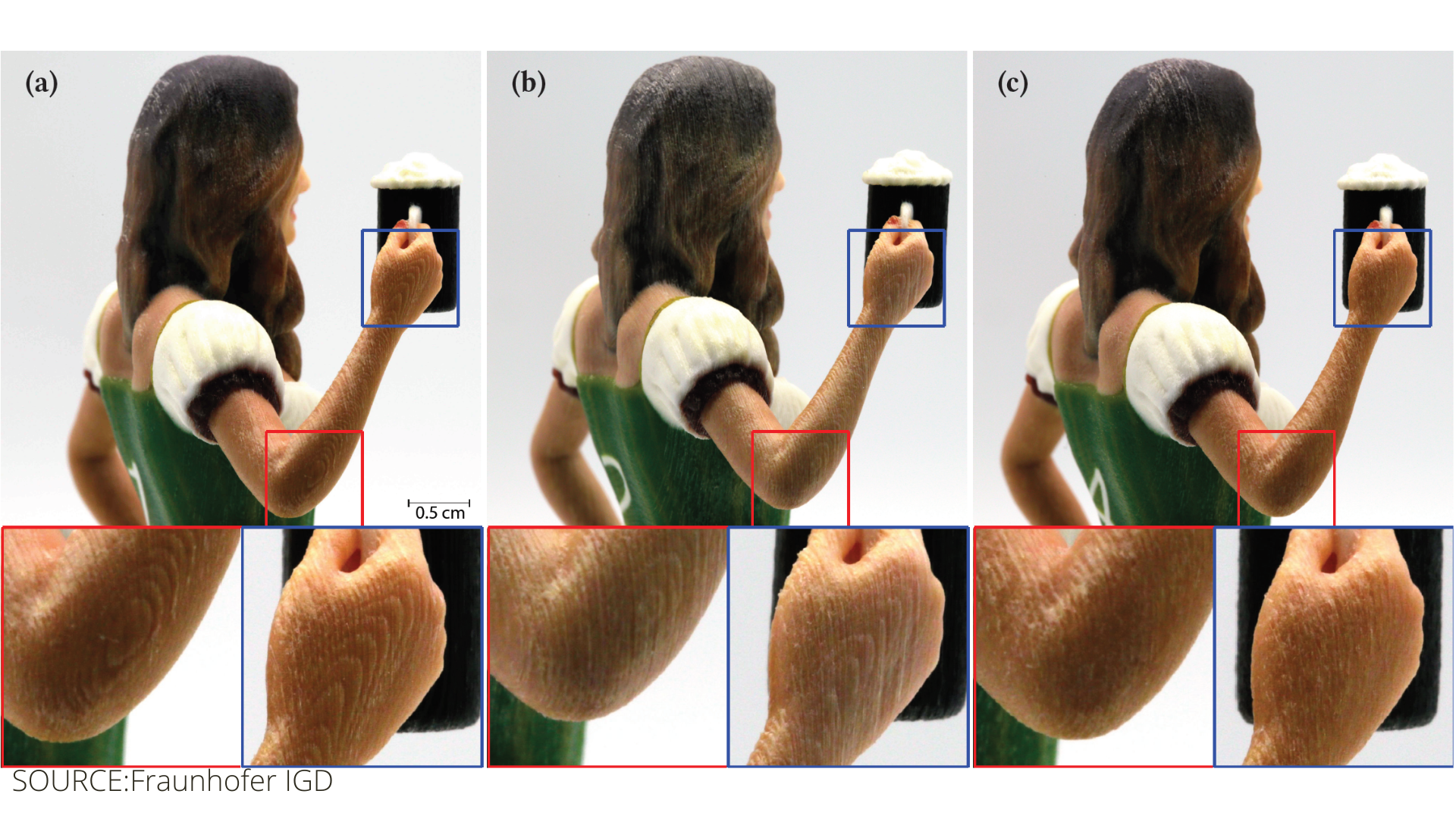
DARMSTADT, Germany, July 28, 2022 — Scientists at Fraunhofer IGD have devised a purely geometric and algorithmic method for the elimination of stair-step artifacts in multi-material 3D printing. To avoid quantization errors, the surface of the object is modulated with a high-frequency signal. This results in geometrically accurate and color-true surfaces. The research team has set down their findings in a paper – Shape Dithering for 3D Printing – which will be published to coincide with SIGGRAPH, the premier conference and exhibition on computer graphics and interactive techniques.
Stair-step artifacts are unavoidable in conventional 3D printing processes. They are visually disturbing and can even be structurally detrimental to the print. To generate more accurate surfaces, researchers at the Fraunhofer Institute for Computer Graphics Research IGD have developed a new process for polyjet printers. It minimizes quantization errors so that stair-step artifacts are no longer noticeable in actual printing and are at a level far below the physical effects of the printing process. This results in objects with a smoother and more uniform surface.
To achieve the desired effect, the surface of the object is modulated with a high-frequency signal, such as blue noise. This leads to a distribution of quantization errors to high frequencies, which are then later removed by the function of the human eye and multiple printing processes. Alan Brunton, a member of the three-person author team, explains: “The printing time remains the same, regardless of the process. The dithering process does not require additional computing time either.”
The process is used, for example, in the entertainment industry. Figures and objects are printed for animated movies, video games and board games. In contrast to previous processes, they benefit from the geometric and color precision conferred by the shape dithering approach and thus look especially realistic.
The dithering process can be used as a purely algorithmic method independently of the hardware, i.e. with different polyjet 3D printers. The solution presented in the research paper is used with the Cuttlefish 3D printer driver developed by Fraunhofer IGD. Based on the results now published, in future, the scientists will investigate the further hypothesis of whether the smoother surface of the printed objects also makes them more resilient.
Read full paper here.


